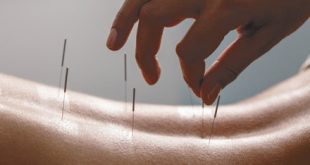By Jeffrey Edwards, MD, RPVI


Risk factors for varicose veins can generally be divided into the categories below, which result in high estrogen levels, venous hypertension, vein valve dysfunction, venous obstruction, and damage to the endothelium (innermost layer of the vein).
• Hormonal: female gender
• Lifestyle: smoking, prolonged standing or sitting, obesity
• Acquired: age, deep vein thrombosis, obesity, pregnancy
• Inherited: family history
Normal venous anatomy is defined by a complex network of deep and superficial veins which are connected by a series of perforating veins, which connect the superficial and deep vein systems. Leg veins have valves within them which permit blood to flow towards the heart and prevent blood from flowing backwards (reflux) towards the feet. Reflux occurs when the valves no longer function properly, which often occurs after a blood clot. Contrary to arteries, through which blood is pumped by the heart, veins rely on the pump action of the calf muscles while walking.
Venous insufficiency results when there is either reflux or obstruction (blockage) of the veins. This leads to venous hypertension or elevated pressure which results in leg swelling, inflammation, pain, heaviness, and aching. Varicose veins are abnormal, dilated vein branches which often branch off of normal superficial veins. As they enlarge, varicose veins are often considered unsightly and can also contribute to symptoms of venous insufficiency described above.
The treatment of varicose veins and venous insufficiency depends on several factors. Mild symptoms can usually be managed successfully with compression therapy (compression stockings which compress the legs and veins). Results of compression are best if stockings are used during the day, especially during prolonged periods of sitting or standing. That being said, Florida’s warm climate as well as aesthetic concerns make compliance with compression therapy a challenge. Fortunately, there are other highly effective treatments that are available.
Microphlebectomy is a procedure used to remove varicose veins through tiny nicks in the skin. This is most often performed on an outpatient basis under local anesthesia. If reflux is also present, then microphlebectomy may be recommended in combination with vein ablation or stripping. Vein stripping is a procedure to remove the saphenous vein (largest superficial vein, located on the inner thigh and leg) through small incisions on the thigh and ankle. This procedure often requires general anesthesia and is rarely performed now due to advancements in vein ablation technology.
Vein ablation is a procedure during which a catheter (small plastic tube) is passed into the saphenous vein under ultrasound guidance. The catheters are specially designed with either a radiofrequency or laser tip which heats the inside of the vein to induce clotting and scarring, permanently closing the vein and eliminating reflux. This procedure can be safely performed in the outpatient setting without the need for general anesthesia, and there is minimal recovery time afterwards. Sclerotherapy is another method used to treat saphenous vein reflux. This is performed by using a small needle to inject a sclerosant (chemical liquid) which induces scarring and closure of the affected vein. Another treatment available is cyanoacrylate (glue) closure of the saphenous vein. Similar to sclerotherapy, this highly effective method is performed through a single puncture in the vein and only requires minimal use of local anesthesia.
Spider veins and telangiectasias are small superficial veins which are often considered unsightly but may be accompanied by localized pain and discomfort. Many people desire treatment of these veins. Fortunately, both sclerotherapy and laser are highly effective. Treatment of spider veins is usually considered cosmetic and thus is not typically covered by major insurance providers. That said, treatment is highly effective with no downtime and no need for any anesthesia.
If you are concerned about the appearance of your legs, or if you are experiencing any of the symptoms of venous disease, there are therapies available for you. Contact your board-certified vascular surgeon, who is uniquely qualified to fully evaluate fully evaluate and treat all disorders of the veins and arteries.
Sarasota Vascular Specialists is the largest medical practice in the Tri-county area dedicated solely to the treatment of patients with disorders of the veins and arteries. Our board-certified vascular surgeons are uniquely trained and experienced to offer all forms of diagnosis and therapy.
Sarasota Vascular Specialists
941-371-6565
www.veinsandarteries.com
Sarasota
600 N. Cattlemen Road, Sarasota, Florida 34232
 Southwest Florida's Health and Wellness Magazine Health and Wellness Articles
Southwest Florida's Health and Wellness Magazine Health and Wellness Articles

